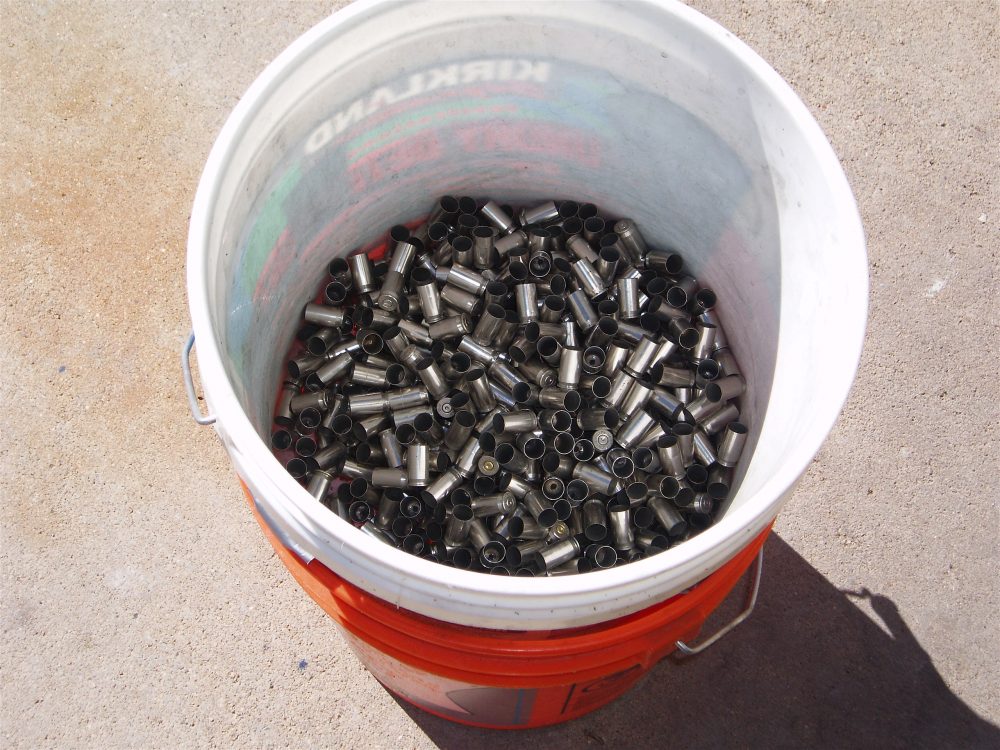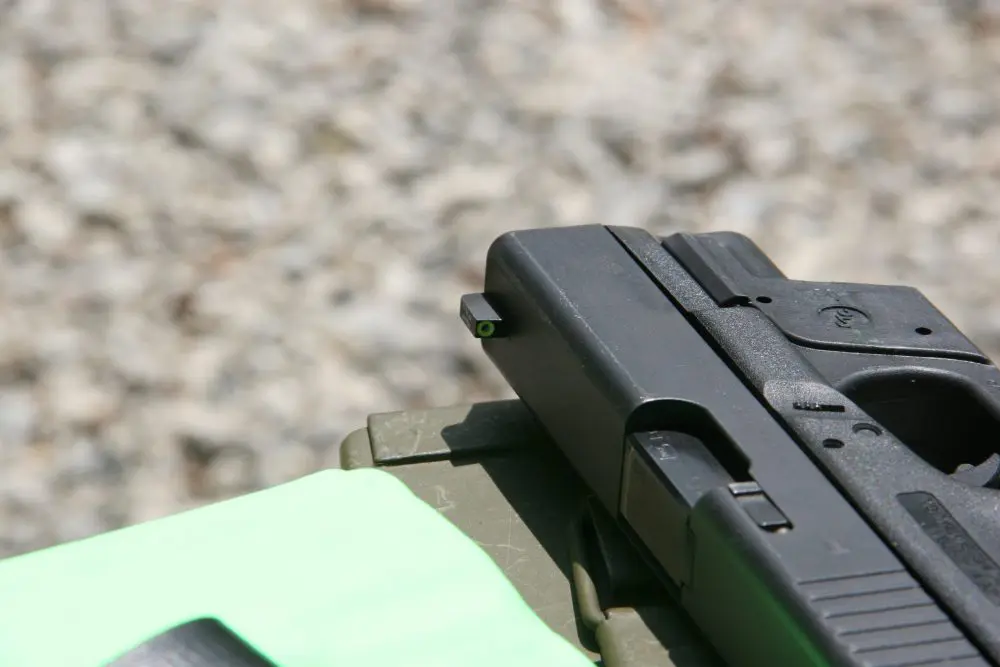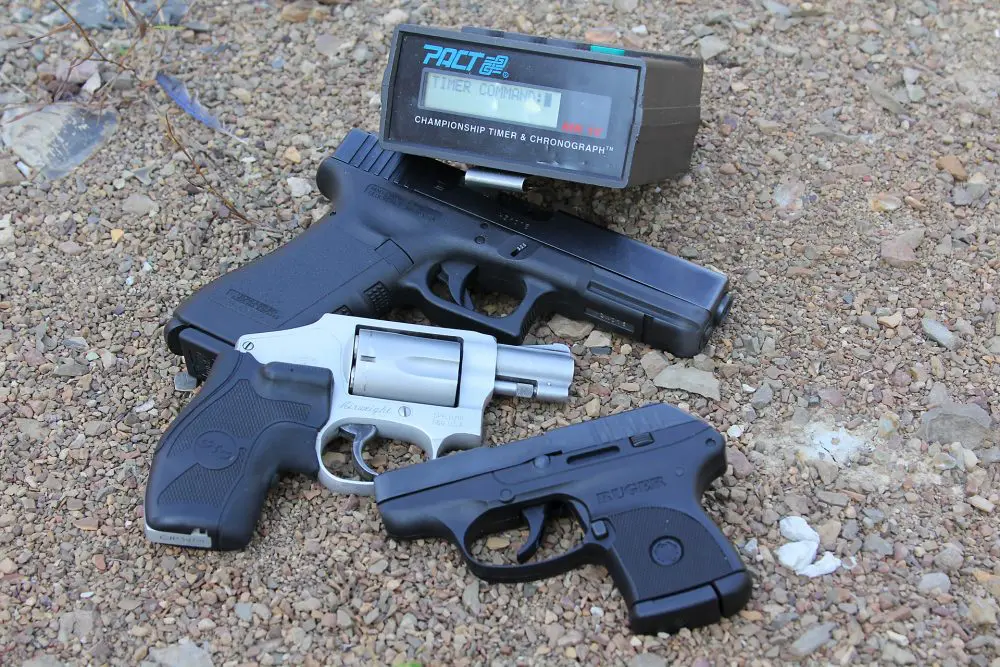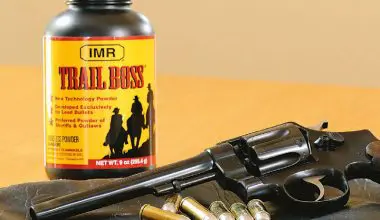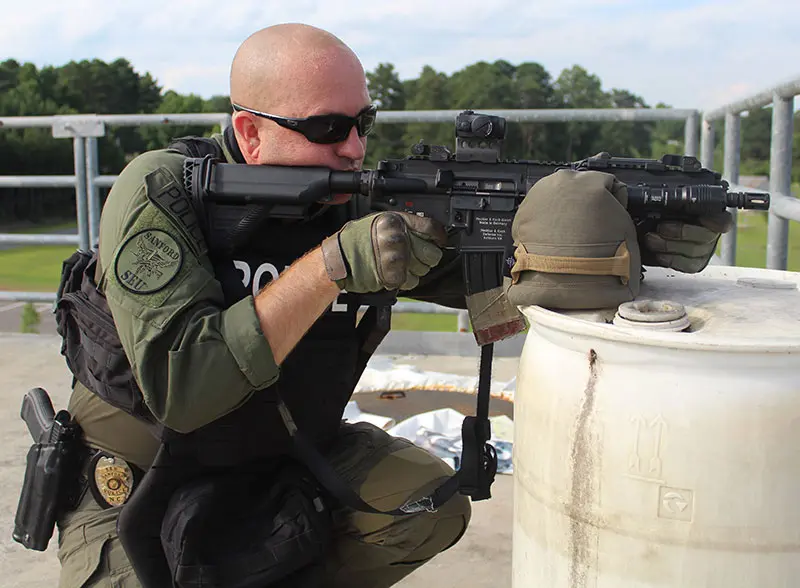Much to my wife’s chagrin, I rarely throw anything away. The reason (excuse?) is, “I’ll find a use for that later.” I attribute this to being the son of a man who grew up during the Great Depression, when anything that could possibly be used was saved. Then again, maybe I’m just cheap or a packrat. Whatever the reason, there it is.
Although rare, my remaining three or four brain cells occasionally rub together long enough for an idea to form in my thick skull. My latest epiphany occurred while tumbling brass in preparation to reloading the empty cases.
All you need are a bucket, a drill and a few minutes.
Without a commercially made brass/media separator—such as the excellent one sold by Dillon Precision—separating the tumbling media from the cases is a tedious chore. This fact became apparent—once again—as I emptied the contents of my Dillon CV-2001 Vibratory Case Cleaner into a five-gallon plastic bucket and began separating the cases from the cleaning media.
Gazing at half a dozen other empty buckets around the garage, I had my rare idea—why not drill holes into the bottom of one and make a homemade brass separator?
Completed separator after drilling holes.
Five minutes with an electric drill and a 3/16-inch bit had hundreds of holes bored in the bottom of the bucket. I poured the entire contents of the Vibratory Case Cleaner into my “separator,” which was placed inside a second bucket. Using the handle of the “separator” to spin it around a few times separated almost all the brass from the media in a flash. Dumping the empty cases into another bucket and then back into the modified bucket had all the media, including the small stubborn pieces that like to stick in the flash holes, separated.
Satisfied that the basic idea worked well, I taped four empty .45 ACP cases around the separator to prevent it from going too far into the media-gathering bucket. This serves two purposes: 1) it keeps the buckets from lodging together and 2) it holds the separator high enough to ensure that the media fall though easily.
Four empty cases are taped to separator to prevent it from going too far into media-gathering bucket.
I’ve gotten in the habit of taking my homemade separator with me to the range now as well. While picking up fired cases, small bits of rock and gravel invariably get in with the brass, necessitating yet another separation process before they go into the Vibratory Case Cleaner to ensure the polishing/cleaning media is not contaminated. That job is now done automatically as I pick up my fired brass. Additionally, if desired, the brass can be hosed off before it goes into a brass tumbler, which removes dust and some powder residue, and the holes in the “separator” allow water to drain off immediately.
Cases after being separated from polishing media.
If you have a couple of plastic buckets lying around your garage, an electric drill and five minutes of spare time, you have what you need to make your own homemade brass separator.
SOURCE:
Dillon Precision Products, Inc.
Dept. S.W.A.T.
8009 E. Dillons Way
Scottsdale, AZ 85260
(480) 948-8009
www.dillonprecision.com




